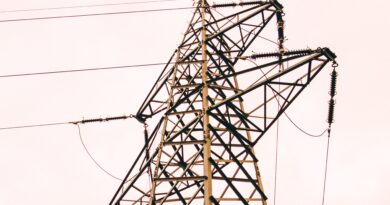Harnessing the Power of Electrical Safety Audits for Maximum Protection
1. Introduction
Electrical safety audits are comprehensive assessments of an organization’s electrical systems, practices, and procedures. These audits are designed to identify potential hazards, assess compliance with safety regulations, and implement corrective measures. By conducting regular audits, organizations can ensure the safety of their personnel, prevent accidents, and safeguard their assets.
2. Understanding Electrical Safety Audits
Electrical safety audits involve a systematic evaluation of various aspects related to electrical systems and practices. This includes assessing the condition of electrical equipment, verifying compliance with safety standards, evaluating maintenance procedures, and identifying potential risks. The audit process provides organizations with valuable insights into their electrical safety performance and areas that require improvement.
3. Benefits of Electrical Safety Audits
Conducting regular electrical safety audits offers several key benefits:
- Identifying Hazards: Audits help identify potential electrical hazards such as faulty wiring, inadequate grounding, overloaded circuits, and improper use of electrical equipment. By addressing these hazards proactively, organizations can prevent accidents and ensure a safe working environment.
- Compliance Assurance: Electrical safety audits ensure compliance with regulatory standards and codes. By adhering to these guidelines, organizations can avoid penalties, legal issues, and reputational damage.
- Risk Mitigation: Audits enable organizations to assess and mitigate risks associated with electrical systems. Identifying and resolving potential hazards significantly reduces the likelihood of accidents, injuries, and property damage.
- Improved Efficiency: By evaluating maintenance practices and equipment performance, audits help identify areas where efficiency can be enhanced. This leads to cost savings, reduced downtime, and increased productivity.
4. Key Components of an Electrical Safety Audit
An effective electrical safety audit typically includes the following components:
- Documentation Review: Evaluating electrical system documentation, including policies, procedures, permits, training records, and maintenance logs.
- Physical Inspection: Assessing the condition of electrical equipment, wiring, grounding, and protection devices. This involves identifying any visible defects or hazards.
- Risk Assessment: Identifying potential risks and evaluating the likelihood and severity of electrical accidents.
- Compliance Evaluation: Verifying compliance with safety standards, regulations, and codes applicable to electrical systems.
- Interviews and Training Evaluation: Interviewing personnel involved in electrical work to assess their knowledge, skills, and adherence to safety protocols.
5. Conducting an Effective Electrical Safety Audit
To conduct an effective electrical safety audit, organizations should follow these steps:
- Planning: Define the scope of the audit, gather relevant documentation, and determine the audit team.
- Preparation: Develop an audit checklist, review regulations and standards, and schedule the audit.
- Data Collection: Gather information through documentation review, physical inspections, interviews, and observations.
- Analysis: Analyze the collected data to identify hazards, non-compliance issues, and areas for improvement.
- Reporting: Prepare a comprehensive audit report highlighting findings, recommendations, and corrective actions.
- Follow-Up: Monitor the implementation of recommended actions and ensure compliance with identified improvements.
6. Addressing Audit Findings
Once an electrical safety audit is complete, it is crucial to address the identified findings promptly. This involves implementing corrective actions to eliminate or reduce hazards, improve safety procedures, and enhance compliance with regulations. Organizations should establish a systematic approach to address audit findings, prioritize actions based on risk severity, and allocate necessary resources for implementation.
7. Training and Education
Effective training and education play a vital role in promoting electrical safety within an organization. It is essential to provide comprehensive training programs to employees involved in electrical work. These programs should cover safety protocols, equipment operation, hazard identification, and emergency response procedures. By equipping personnel with the necessary knowledge and skills, organizations can minimize the risk of accidents and ensure a safer work environment.
8. Implementing Preventive Measures
Prevention is key when it comes to electrical safety. Organizations should implement preventive measures such as routine equipment inspections, regular maintenance, and testing procedures. Additionally, promoting a culture of safety encourages employees to report potential hazards promptly and actively participate in maintaining a safe working environment.
9. Compliance with Regulatory Standards
Compliance with regulatory standards and codes is crucial for electrical safety. Organizations must stay updated with the latest safety regulations and ensure their electrical systems meet the required standards. Regular audits help identify areas of non-compliance and provide an opportunity to rectify any deficiencies promptly.
10. Building a Safety Culture
Creating a safety culture is essential to foster an environment where electrical safety is a top priority. This involves developing safety policies, encouraging open communication about safety concerns, recognizing and rewarding safe behaviors, and conducting regular safety meetings. By ingraining safety practices into the organizational culture, organizations can significantly reduce the risk of electrical accidents.
11. Integrating Technology in Electrical Safety Audits
Advancements in technology have greatly enhanced the effectiveness and efficiency of electrical safety audits. Digital tools and software applications can streamline the audit process, automate data collection, and provide real-time insights. Utilizing technology can improve the accuracy of audits, facilitate data analysis, and enable more informed decision-making regarding safety improvements.
12. The Role of Professionals in Electrical Safety Audits
Engaging qualified professionals, such as electrical safety consultants or engineers, can significantly enhance the effectiveness of electrical safety audits. These professionals possess expertise in evaluating electrical systems, identifying potential hazards, and recommending appropriate safety measures. Their involvement ensures a comprehensive and objective assessment of an organization’s electrical safety practices.
13. Common Challenges in Electrical Safety Audits
Electrical safety audits may face various challenges, including:
- Limited resources for conducting audits and implementing corrective actions.
- Resistance to change or lack of commitment to safety improvement initiatives.
- Complex and evolving regulatory requirements that demand continuous compliance monitoring.
- Inadequate documentation or lack of centralized information management systems.
- Inconsistent enforcement of safety protocols across different organizational units or sites.
14. Cost-Effectiveness of Electrical Safety Audits
While there are costs associated with conducting electrical safety audits, the benefits far outweigh the expenses. By preventing accidents, injuries, and property damage, organizations
can save significant costs that may arise from legal liabilities, medical expenses, equipment repairs, and business interruptions. Electrical safety audits help organizations identify potential risks and implement proactive measures to mitigate them, resulting in long-term cost savings and improved operational efficiency.
15. Conclusion
Harnessing the power of electrical safety audits is crucial for organizations to ensure maximum protection against electrical hazards. By conducting regular audits, organizations can identify potential risks, comply with safety regulations, and implement preventive measures. It is essential to address audit findings promptly, provide comprehensive training, and foster a safety culture within the organization. Leveraging technology and engaging qualified professionals further enhances the effectiveness of electrical safety audits. Investing in electrical safety not only safeguards personnel and assets but also brings long-term cost savings and operational improvements.




